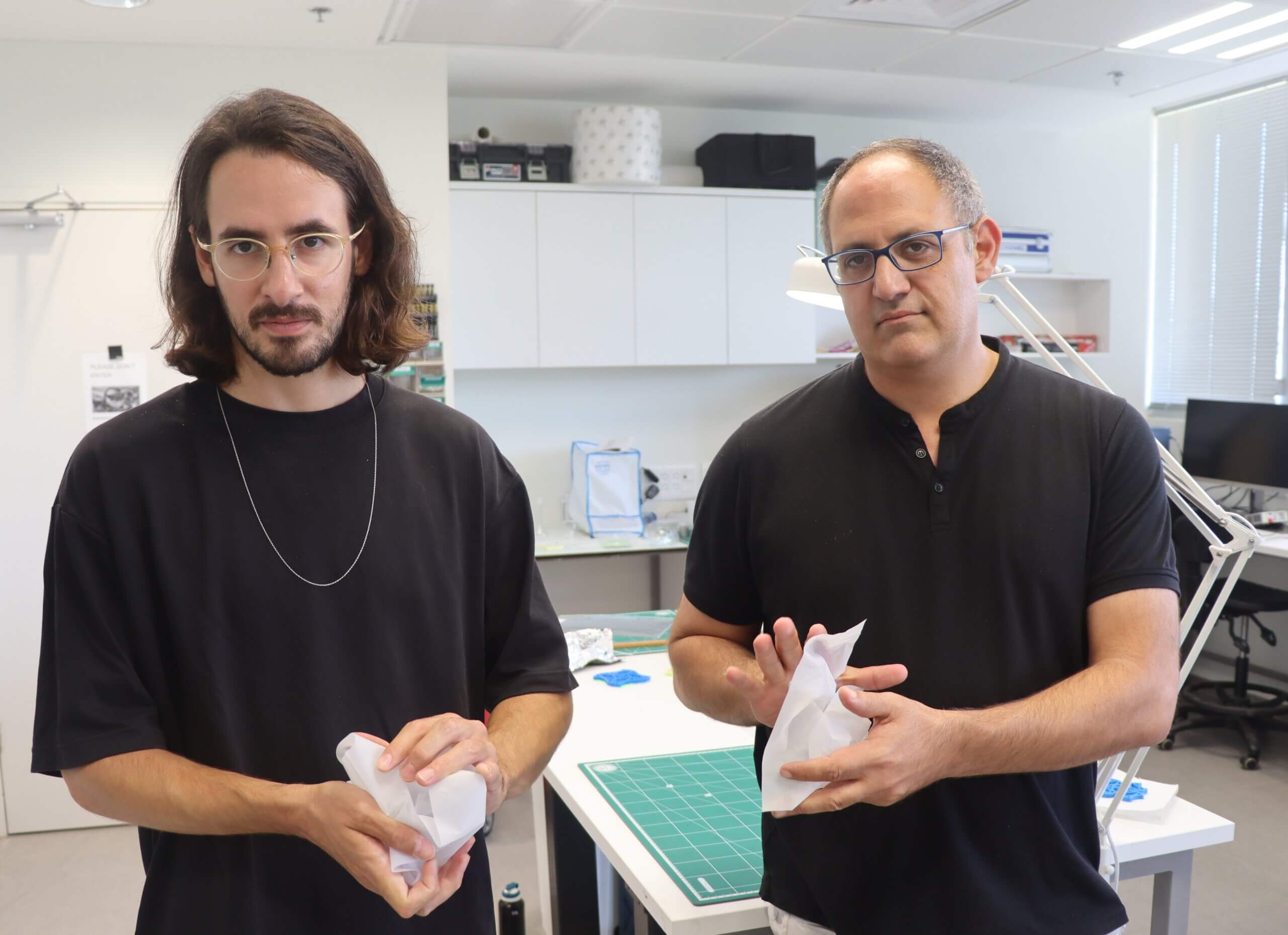The researchers who cracked the fascinating physics of crumpled sheets of paper

Each of us crumples countless papers in our lifetime. We throw the paper over the back, straight into the nearest trash can at worst, and at best into the paper recycling bin, and forget about it. But it turns out that there are those who find a whole world in this wrinkled sheet.
Researchers from Tel Aviv University and the Technion have for the first time succeeded in mapping the connection between the complicated network of connections that forms in a thin sheet after its repeated wrinkling and its surprising mechanical properties, primarily the system's ability to encode and store mechanical memories. The researchers say that the importance of the research is not only in cracking the system itself but also in the insights it provides on a wide family of complex physical systems in the field of condensed matter. The research was carried out under the leadership of doctoral student Dor Shochat and Dr. Yoav Lahini from the School of Physics and Astronomy at Tel Aviv University. The topic of modeling and simulations in the research was led by Dr. Daniel Hexner from the Faculty of Mechanical Engineering at the Technion, and it was recently published in the prestigious journal PNAS.
The researchers discovered how the network of folds and creases created when thin sheets are creased by external effort, results in a drastic change in the sheet's mechanical properties. The process of creating the network in itself enables the coding of the efforts that have been applied on paper up to that moment, as a kind of physical "memory" of the system. But surprisingly, after creasing, the sheet is able to store additional mechanical memories, without creating new folds or wrinkles.

read the material memory
Dr. Lahini explains: "When we store information on our computer's hard disk, we convert it into a cipher that consists of the digits zero and one only. Physically, each such digit is encoded in a magnetic component with two stable states called a "bit", with the direction of its magnetic field (up or down) encoding the value of the digit (zero or one). A transition between the two modes, in favor of encoding or reading the memory, is made possible by a phenomenon called a loop, or hysteresis. What we identified in the wrinkled sheets is a similar phenomenon, but of a mechanical nature. It turns out that when the sheet is creased, a tangled array of creases is created in it, each of them functioning as a small electrical circuit with two stable states - a kind of mechanical "bit". The two modes differ in their geometry, where the crease can protrude in or out of the sheet. One such component we call histron, and it is the basic component of the memory response of the entire substance. The collection of histrons from which the entire sheet is built can encode and store diverse memories of various mechanical events experienced by the sheet. Thus, by planning various mechanical manipulations, it is possible to save and read memory from within the system."
Doctoral student Dor Shohat adds that "the interaction that exists between these histrons plays an important role in the general mechanical properties of the sheet. Each of them and all of them together 'encode' the processes that the paper goes through, so that in principle, by mapping and analyzing the creases in the cloth it is possible to reconstruct the operations that were performed on it in retrospect and 'read' the memory. It also turns out that because of the strong interactions, a situation called "geometric frustration" was created in professional parlance. In this situation, due to the disordered structure of the wrinkles, the hysterons interfere with each other and the wrinkled sheet has difficulty reaching a low energy state, which further refines its mechanical response. In this there is a similarity to a fascinating magnetic system called spin-glass, and to other disordered systems."
It's not the amount, it's the wrinkle
In recent years, the study of complex physical systems (Complex Systems) has greatly expanded, which require the use of creative and innovative theoretical models that take into account a large number of interconnected degrees of freedom - and it is not always possible to describe the dynamics between them using an analytical solution based on the properties of the individual degree of freedom. The whole, in this case, exceeds the sum of its parts.
In this spirit, doctoral student Dor Shohat adds: "Since there is no simple solution to such complex systems, in order to understand them in depth one must understand the relationship between the behavior of a single degree of freedom and the behavior of the entire system. The research on wrinkled sheets makes it possible to create such connections, thanks to their large characteristic dimensions. It is enough to hold a crumpled paper in your hand and watch its mechanics, to get a physical intuition. A simple example is the memory of the shape that the wrinkled sheet has - if we bend it around a certain object, it will take its shape without new wrinkles forming - thanks to the histrons that make it up, which give it the ability to take a large number of stable shapes." The researchers conclude that the new conclusions go beyond the specific experimental system, and they shed light on the formation of physical memory in more complex systems, where access to the individual degrees of freedom is more difficult.
For the article escientific
More of the topic in Hayadan:
